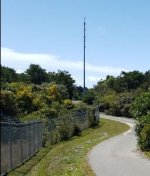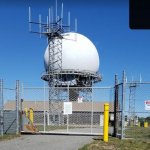Is it common practice to place RCAG antennas inside VORs too? (Not adjacent to the VOR, in the VOR)
That's a really good question I have too.
What triggers my questions is I'm in the process of trying to produce an all-inclusive list of RCAGs along with accurate locations. It's based on the NASR data published by FAA every 28 days, but I'm attempting to confirm each location via Google maps satellite imagery. (NO, i will NOT be updating this monthly

)
The locations provided in the AFF file are in some cases smack on the money, and in some cases are miles wrong. (Yes, for radio, precision in location isn't essential, but I spent a long time working in positioning applications and have become OCD over this

) Anyway, there are three general classes of location I've noticed:
- An actual RCAG installation. These types of installations vary some but most consist of a square, fenced in area with one to as many as six square towers installed, each containing a number of antennas (simple white masts).
- On the grounds of an airport but not at an actual antenna installation. These can be located smack in the middle of a runway or some other quasi-random location. It seems these denote antennas installed atop the control tower, a grid of antennas on the roof of a (typically "official") building on the airport property, a small standalone tower or something similar.
- On or very near a VOR. The satellite imagery runs out of resolution to detect these conclusively, but it seems that for many of these there are some small number of small "pipe"-like masts with two or three antennas mounted in a line on a radial of the VOR (presumably to minimize interference). But I've seen VOR locations where I could see no such mast. I've wondered as well whether it's possible to build the antenna inside the VOR cone.
One of my fears is I'm confusing RDOs and RCAGs.
And so far as sector names... well, fuggedaboutit... I'm currently disinclined to issue FOIA requests to 22 FAA sites. I guess I'm confused why FAA would not simply publish the names, since they publish the locations of the radio sites that support them.





